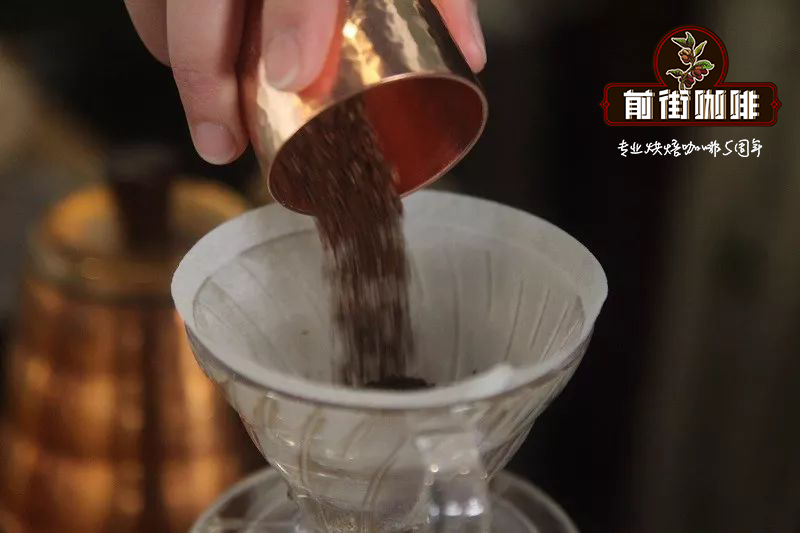Coffee beans get better as they age? The doctor taught you how to eat coffee beans is the healthiest.

Professional coffee knowledge exchange more coffee bean information please follow the coffee workshop (Wechat official account cafe_style)
It is rumored on the Internet that coffee beans are like old wine, the older they are, the better they get. This statement has been severely slapped in the face by coffee roasting experts and doctors. Chen Zhihuang, winner of the 2013 Nordic Cup Coffee Baking Competition and with nearly 20 years of experience in roasting coffee beans, said that coffee beans are like "fresh food." the more fresh the better, the more fresh the coffee beans are, the better. The aroma of coffee beans reaches its peak within four days to two weeks, and then, the aroma begins to decline, and it may even produce a "fuel-guzzling smell." the older the coffee beans are, the better they are.
Coffee beans, like milk and bread, must be freshly ground to drink in order to enjoy the real coffee aroma. If placed for too long, the aroma will be greatly reduced, and sometimes there will be fuel consumption. Chen Zhihuang explained that the kitchen range hood often gives off the stench of oil, and that smell is the smell of fuel consumption.
Not only that, if coffee beans are improperly preserved and exposed to high temperature and humidity for a long time, they are also easy to produce toxic substances such as ochratoxin and aflatoxin, which will increase the risk of liver disease. Therefore, only when coffee is drunk fresh can we really enjoy the aroma of coffee and reduce the risk of ochratoxin, aflatoxin and other pollution.
Animal experiment: ochratoxin An increases the risk of urinary tract tumor
If coffee beans are stored in the wrong way, resulting in mildew of coffee beans, the harm will be more obvious, ochratoxin will be produced. Ochratoxin is a metabolite produced by some fungi. Ochratoxin is divided into A, B, C and D. among them, ochratoxin An is the most harmful. Yan Zonghai, professor of the Department of Nephrology at Linkou Chang Gung Memorial Hospital and director of the Clinical Toxicology Center, pointed out that ochratoxin A has nephrotoxicity, and the World Health Organization is listed as a "second-level 2B carcinogen." Some foreign animal experiments have found that ochratoxin may increase the risk of urinary tract tumors and cause some harm to human beings.
Some scholars believe that ochratoxin A may cause acute and chronic kidney disease, uremia, cancer and other diseases. it will also increase the risk of miscarriage and birth of deformed children in women. Apart from coffee, whole grains and Chinese herbal medicines are not well preserved, they can also become moldy and produce ochratoxin.
Hot and humid environment is a hotbed of ochratoxin A
Yan Zonghai said that molds that produce ochratoxin most like to grow in an environment with a relative humidity of 18.5% and a temperature of more than 25 ℃. When coffee beans are moldy, because the coffee beans themselves have aroma, it is easy to cover up the moldy taste, so it is not easy for the general public to distinguish from the fragrance and appearance, but it is less likely to produce toxins when placed in a low temperature and dry environment.
According to the data of the European Commission (European Commission), the daily allowable intake of ochratoxin A for adults (TDI) is 5 ng per kilogram of body weight, and for adults weighing 60 kg, the daily intake of ochratoxin An is 300ng.
The United Nations International Food and Agriculture Organization ╱ World Health Organization Joint expert Committee on Food Additives (referred to as JECFA) recommends that adults take 100 nanograms of ochratoxin per kilogram of body weight per week. The Food and Drug Administration has also set a limit standard for ochratoxin A. The Food and Drug Administration stipulates that ochratoxin An in roasted coffee beans and coffee powder should be below 5ppb in order to meet the standard.
Three enemies of coffee beans: light, humidity and heat
Chen Chih-Huang stresses that coffee beans are "afraid of light, humidity, and heat." direct light, humidity, and high temperature can also hurt the aroma and taste of coffee beans. For example, many people are used to putting coffee beans next to kitchens or thermos, such as thermos, which are heated almost 24 hours a day. When coffee beans are placed next to them, the aroma of coffee disappears at once, and it is also easy to produce oil consumption. Therefore, places such as kitchens and thermos are not suitable for placing coffee beans. It is recommended to keep coffee beans in a cool and dry environment to avoid direct sunlight and light, so as to maintain the aroma and quality of coffee.
After people buy coffee beans, for convenience, they are sometimes ground into powder early and set aside. Chen Chih-Huang said that coffee beans also oxidize, and after oxidation, the flavor will be greatly affected, and when coffee beans are ground into powder, the surface contact area of coffee beans increases greatly, and the chance of oxidation naturally increases greatly. Therefore, it is recommended to grind the coffee beans into powder before drinking coffee. The way of grinding and drinking is better to keep the aroma of coffee beans at its peak.
As for the storage of coffee beans, after people buy coffee beans, they can be divided into small packages, sealed and placed in the freezer. When they want to drink coffee, they take out a small bag, open the bag at room temperature, and let the moisture evaporate completely. When the coffee beans return to normal temperature and become dry, they can be ground into powder, brewed, and drunk.
Chen Zhihuang warned that moisture can destroy the aroma of coffee. When coffee beans are placed in the freezer, it is easy to absorb moisture from the refrigerator and also absorb the flavor of other foods. Therefore, it is better to put them in the freezer after sealing. When coffee beans are taken out of the freezer and restored to normal temperature, drink them freshly. Do not freeze or thaw them repeatedly, so as not to damage the quality of coffee beans.
Drinking coffee in moderation is good for your health.
In fact, drinking coffee in moderation can have some health benefits. Donald D. Hensrud, an expert in preventive medicine and nutrition at Mayo Medical Center in the United States, pointed out that research has found that coffee may help reduce the risk of liver disease such as Parkinson's disease, type 2 diabetes, or liver cancer. In addition, coffee also seems to improve cognitive function and reduce the risk of depression.
However, studies have shown that people who drink too much unfiltered coffee such as Boiled Coffee and Espresso Coffee may have slightly higher cholesterol.
Foreign studies have also found that some people have genetic mutations and the body breaks down caffeine more slowly. if these people drink more than two cups of coffee a day, it may increase the risk of heart disease. It can be seen that the speed at which the body metabolizes coffee is closely related to the health risk of drinking coffee. Hansrud also warned that although drinking coffee has more health benefits than disadvantages, adding cream, cream, sugar, etc., is tantamount to eating more fat and calories, sometimes even hundreds of calories.
Excessive caffeine intake has a lot of problems.
Excessive caffeine intake can sometimes cause problems. The Mayo Medical Center in the United States pointed out that for most healthy adults, consuming 400 milligrams of caffeine and about four cups of brewed coffee a day will not cause much problem, and when consuming too much caffeine, it may cause migraine, nervous tension, insomnia, restlessness, irritability, frequent urination, stomach discomfort, rapid heartbeat, muscle tremors and other problems.
Yen Tsung-Hai points out that in terms of per kilogram of body weight, adults are advised not to consume more than 6 milligrams of caffeine a day, such as men weighing 60 kilograms, and no more than 360 milligrams a day for women weighing 50 kilograms. Daily caffeine intake should not exceed 300 milligrams. While a cup of 150c.c drip ground coffee contains 110mg of caffeine and weighs 50kg for adults, it is recommended to drink no more than two cups a day.
Special ethnic groups, be careful when drinking coffee
Although caffeine is mostly safe for adults, the Mayo Medical Center in the United States warns that children are not advised to use caffeine, while teenagers should limit their caffeine intake and avoid using caffeine in combination with alcohol.
In addition, some people are particularly sensitive to caffeine or are taking specific drugs, so these groups are not advised to drink coffee or eat caffeinated foods or drinks. As for women who are pregnant, preparing for pregnancy, or breastfeeding, they may have to discuss with their doctor to see if there is a need to limit caffeine intake.
Chen Chih-Huang also reminded that when people go to coffee shops to drink coffee, they can observe whether coffee beans are ground before brewing coffee. When buying coffee beans, they can ask for information such as the roasting date, baking time, storage date, and storage time of coffee beans. As a reference indicator.
When buying coffee beans, try not to blindly believe that foreign imported brands must be good. People can go online to do their homework, inquire about word-of-mouth, and compare and learn more about the situation of merchants. Only in this way can they have the opportunity to buy good quality coffee beans.
Taiwanese really love to drink coffee. Within a few steps, there must be a cafe. Otherwise, convenience stores all over the street sell coffee. Most of the coffee grounds after cooking will be thrown into the dustbin, but in fact, coffee grounds have a lot of functions. Most shops are also happy to provide coffee grounds that are not in use. Therefore, this free resource can be collected, not only reducing the amount of garbage, but also can be used beautifully.
Composting of coffee grounds
Equipment for ◆: coffee grounds, fine nets, wooden cases or plastic baskets with good drainage at the bottom (not more than 40cm), shallow plates, dozens of red earthworms, plastic covers.
◆ approach:
1. After mixing coffee grounds with raw kitchen waste, first fill them with a fine net, and then load them into wooden boxes and plastic baskets with good drainage at the bottom. at first, the coffee grounds can be stacked at a height of only 10 centimeters, and the bottom is filled with excess water in a shallow dish.
2. Water the coffee grounds every day and keep them moist. After about 2 weeks, you can see that the coffee grounds are moldy.
3. You can buy red earthworms in fishing stores. After adding dozens of earthworms, you can use these food residues to feed earthworms and turn them into compost.
4. After adding earthworms, you can add new compost every day, up to 30cm, and then cover it on top.
5. After about 6 ∼ and 12 weeks, you can see that the shape of the coffee grounds has been broken down and the color has changed to black, indicating that the compost has been made and can be added directly to the basin. If there is only coffee grounds, it will take about half a year to turn into good compost.
◆ considerations:
1. Because earthworms do not like citrus, do not add citrus peel to raw kitchen waste. Mixing cooked kitchen leftovers is also possible, but the proportion should not exceed 10%, so as to prevent earthworms from eating too much salt in cooked kitchen leftovers.
2. This method is only suitable for cultivating red earthworms, because only red earthworms can grow in high density in the box.
How to use ◆:
1. Compost together with earthworms can be directly added to the plant.
2. During the composting process, a black liquid, called "humic acid", is discharged. Diluting it and watering the flowers can help plants grow and reduce diseases and insect pests.
6 key points of drinking coffee healthily
1. Coffee beans are ground and drunk while fresh
2. Coffee beans should be stored in a dry and cool environment
3. Grind coffee beans before drinking coffee
4. Don't drink too much unfiltered coffee
5. Add less cream, cream and sugar to coffee
6. Adults' daily caffeine intake should not exceed 6 mg per kilogram of body weight
Important Notice :
前街咖啡 FrontStreet Coffee has moved to new addredd:
FrontStreet Coffee Address: 315,Donghua East Road,GuangZhou
Tel:020 38364473
- Prev

How to eat coffee beans? beans are too monotonous. Make good use of the know-how to match your own flavor
Professional coffee knowledge exchange more coffee bean information Please pay attention to the coffee workshop (Wechat official account cafe_style) even rice produced in the same country will show different taste and quality due to different regions. The taste and aroma of coffee produced around the world will also vary from region to region. Mixed with different flavors, aromas and different places of production.
- Next

The finer the coffee beans are ground, the easier the antioxidants will dissolve! How can coffee beans taste good?
Professional coffee knowledge exchange more coffee bean information please pay attention to coffee workshop (Wechat official account cafe_style) Coffee is the most complex food with known natural substances. Scientists have isolated more than 300 chemicals from raw coffee beans and more than 800 kinds of cooked beans, including many acidic organic compounds, which are not only a source of sour flavor, but also for health.
Related
- Beginners will see the "Coffee pull flower" guide!
- What is the difference between ice blog purified milk and ordinary milk coffee?
- Why is the Philippines the largest producer of crops in Liberia?
- For coffee extraction, should the fine powder be retained?
- How does extracted espresso fill pressed powder? How much strength does it take to press the powder?
- How to make jasmine cold extract coffee? Is the jasmine + latte good?
- Will this little toy really make the coffee taste better? How does Lily Drip affect coffee extraction?
- Will the action of slapping the filter cup also affect coffee extraction?
- What's the difference between powder-to-water ratio and powder-to-liquid ratio?
- What is the Ethiopian local species? What does it have to do with Heirloom native species?

